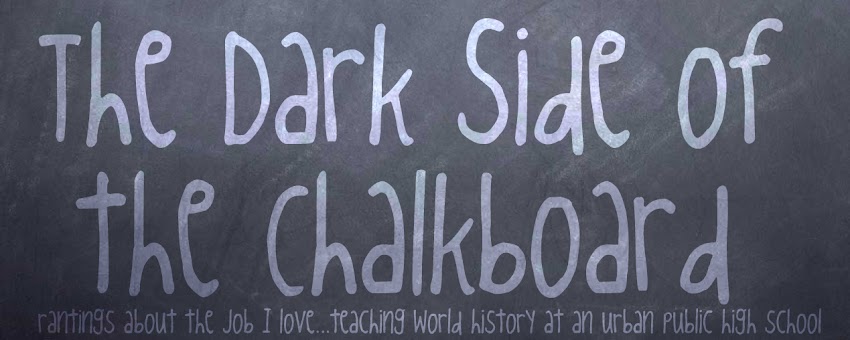It is always a shock to the kids when we use skills from classes like MATH or SCIENCE in HISTORY. To a high schooler, there is a giant invisible sieve on the door of my classroom, and all knowledge gained during the class period is strained out while exiting and lies in a giant heap on the floor. So this week, when I announced that we would be wrapping up the Industrial Revolution with a little math problem, there was a univeral WHINE and GROAN and instantaneous complaining from all quarters. And then, we did this:
 tree symbolizes raw materials, stick figure symbolizes labor, and the box symbolizes a factory.
tree symbolizes raw materials, stick figure symbolizes labor, and the box symbolizes a factory. And here, we multiply "cheap" by all three variables to make the end result - maximum profit, which was the desire of Industrialists in the Industrial Revolution. Then below, we point out that England (Europe) had cheap labor and factories, but no (few) raw materials, whereas Africa had all kinds of raw materials. This way the kids can see how we get from the Industrial Revolution into the Scramble for Africa that happened in the mid-19th century.
And here, we multiply "cheap" by all three variables to make the end result - maximum profit, which was the desire of Industrialists in the Industrial Revolution. Then below, we point out that England (Europe) had cheap labor and factories, but no (few) raw materials, whereas Africa had all kinds of raw materials. This way the kids can see how we get from the Industrial Revolution into the Scramble for Africa that happened in the mid-19th century.The point was to get them to understand how the Industrial Revolution led to Imperialism in Africa as we get ready to begin a mini-unit and debate on the Belgian Congo this week.
Fortunately, all students survived the mixing of math and social studies. I may or may not survive five more days to spring break.
Did I mention that one of those days contains a dance?? Yea for chaperoning!! =(

2 comments:
As a person who hates math, but loves social studies... you made math bearable. And that's actually a cool way to explain the imperialistic train wreck that eventually became today's social nightmarish Congo. You are such a good teacher.
That's great! I'll have to keep that illustration in mind for at some point in the future I just may get to teach that!
Post a Comment